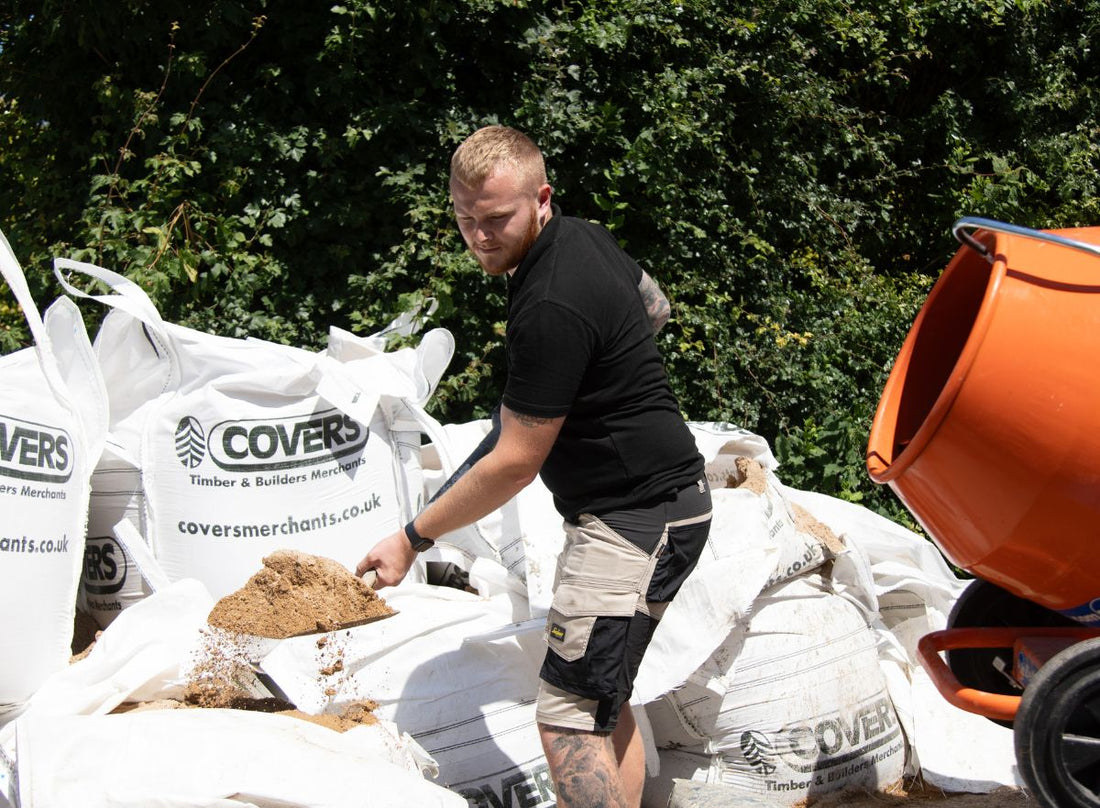
How to Create the Perfect Cement Mix
Mixing cement is one of those jobs that looks easy until you actually start doing it. Get the mix wrong and you’ll quickly find that your mortar is either crumbling apart or far too wet to hold its shape.
The key to success lies in understanding the correct ratios, knowing what to look for in the consistency, and developing the confidence to judge a mix by eye. With a little practice, you can create the perfect cement every time.
The standard starting point for a general mortar mix is one part cement to four parts sharp sand. This ratio is a solid all-rounder and works well for bricklaying, pointing, and most small building projects. For rendering or plastering, a slightly softer mix can be used, such as one part cement to five or even six parts sand. If you are creating concrete rather than mortar, aggregate is added to the mix to provide strength, usually with a ratio of one part cement, two parts sand, and four parts gravel. These ratios are not set in stone but act as a reliable guide that many builders stick to.
Water is where many people go wrong. There is no fixed amount to add because the moisture content of sand can vary a great deal. Instead, water should be introduced slowly while the mix is turning until the right consistency is reached. Too little water will leave the mortar crumbly, hard to spread, and weak once it sets. Too much water will make it sloppy and prone to cracking as it dries. The goal is to create a mix that holds together firmly but remains pliable enough to spread with ease.
This is where having control over your water supply makes a real difference. A tool like CemixFlo, which attaches directly to your mixer, gives you a simple valve to regulate water flow as you go. That means no more guesswork with buckets and far less chance of overwatering your mix. You can make adjustments on the spot, ensuring every batch reaches the perfect consistency.
Eyeballing a mix is a skill that comes with experience. Builders who mix mortar every day rarely measure with buckets or shovels; they can tell by sight and feel when it is right. The first thing to notice is the colour.
A properly blended mix will have an even tone, with no grey streaks of cement powder or patches of dry sand. The second thing to look for is texture. The mix should appear smooth and cohesive rather than grainy or watery. Finally, there is the feel of the mortar on the trowel. A good mix will cling to the trowel when lifted but slide off cleanly with a quick tap.
A simple test is to scoop up a trowelful and tilt it slightly. If the mortar holds its shape but slowly begins to ease off the blade, you are in the sweet spot. If it sits stubbornly without moving, the mix is too dry and needs a splash more water. If it runs off in a puddle, it has been over-watered and needs a little extra sand and cement to bring it back into balance.
Consistency is everything. Even when working by eye, it pays to be as regular as possible in how you measure and mix. Using the same size shovel, the same buckets, and mixing for the same amount of time helps to avoid variations from one batch to the next. A well-mixed mortar will always be stronger and more reliable than one that has been rushed.
Fresh cement also makes a big difference. Once a bag has been opened, it can start absorbing moisture from the air and losing its strength. Using cement that has been stored for too long may mean the finished mortar is weaker than intended. Sand quality also matters; sharp sand is generally preferred for most construction work because it provides a stronger bond than soft or fine sands.
For those just starting out, it is better to mix smaller batches until you gain confidence. Mortar has a working life of about two hours depending on the weather, and it is always better to make less and remix than to waste a large pile that has started to set. Hot or windy days will shorten the working time, while damp and cold conditions may extend it slightly.
Ultimately, the perfect cement mix is not about following a rigid recipe but about learning to judge the materials in front of you. Pay attention to colour, texture, and feel. Add water gradually and mix thoroughly until the whole batch is even. With practice, you will be able to eyeball the ratios and spot the right consistency almost instantly. That balance between firmness and workability is what makes mortar a pleasure to use and ensures a strong, lasting result in any project.
